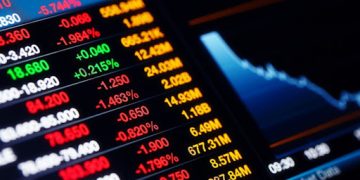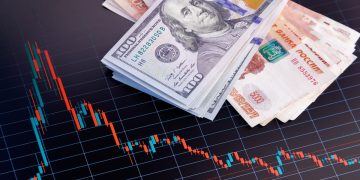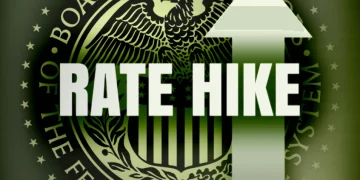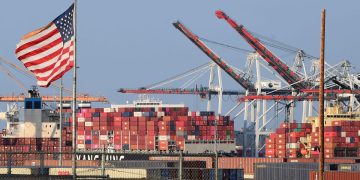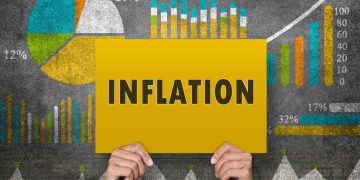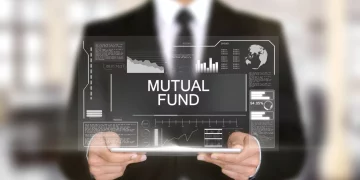Introduction
In the world of finance, the stock market is often viewed as a barometer of economic health. For investors, policymakers, and everyday individuals, the movement of global stock indices such as the S&P 500, the Dow Jones, and the FTSE 100 can signal either prosperity or impending doom. When these markets experience significant drops, the effects ripple across industries, countries, and households. Global stock market crashes—defined as sharp declines in stock prices over a short period—can be disorienting and alarming. Yet, understanding the root causes of these crashes is vital for both prevention and informed investment strategies.
This article delves into the underlying causes of a global stock market crash, exploring the multiple factors that trigger such market movements. From macroeconomic indicators to geopolitical tensions, and even investor psychology, stock market crashes are the result of complex interactions between various forces. We will examine these factors in detail to provide a comprehensive view of what leads to such a seismic event in the global financial markets.
1. Economic Factors
a. Inflation and Interest Rates
One of the most significant factors contributing to a stock market crash is the state of inflation and the corresponding monetary policies of central banks. Inflation—when prices for goods and services rise—often leads to higher interest rates, as central banks attempt to control the purchasing power of the currency.
- Inflation’s Impact on Stocks: When inflation rises, the cost of goods and services increases, which can reduce consumer spending and corporate profits. As a result, investors may sell off stocks in anticipation of reduced earnings from businesses.
- Central Bank Actions: To combat inflation, central banks like the U.S. Federal Reserve or the European Central Bank may raise interest rates. While this can curb inflation, higher interest rates increase the cost of borrowing for businesses and individuals, slowing economic growth. If the rate hike is aggressive or occurs rapidly, stock prices may fall as investors worry about the knock-on effects on the economy.
b. Recession Fears
Another key economic trigger is the fear or reality of a recession. A recession occurs when economic activity slows for two consecutive quarters or more, typically characterized by lower GDP growth, higher unemployment, and declining consumer spending. During recessions, corporate earnings tend to decline, which directly impacts stock prices.
- Corporate Earnings: Stocks are often seen as a reflection of a company’s profitability. When earnings reports show lower-than-expected profits, stock prices can tumble, leading to wider market sell-offs.
- Investor Sentiment: Investors tend to react strongly to recession fears, even if they are not yet confirmed. This heightened uncertainty can lead to a panic sell-off, where investors try to mitigate risks by liquidating their positions.
c. Global Trade Disruptions
Trade wars, tariffs, and international sanctions can disrupt the global supply chain, leading to inflationary pressures and slower economic growth. In recent years, the ongoing trade tensions between major economies such as the U.S. and China have led to market volatility. Any disruption in the flow of goods can significantly affect businesses’ ability to operate efficiently, thereby reducing their profitability and impacting stock market valuations.
- Impact on Multinational Companies: Multinational companies are particularly vulnerable to trade disruptions, as they often rely on global supply chains. Increases in tariffs or changes in trade agreements can significantly impact profit margins, leading to lower stock prices.
2. Geopolitical Factors
a. Political Instability
Geopolitical risks, such as political instability, changes in government, or social unrest, can be major contributors to stock market crashes. Markets dislike uncertainty, and when political events lead to an uncertain future, investors become wary.
- Government Policies: Major shifts in government policies—such as changes in tax laws, nationalization of industries, or sudden regulatory changes—can have a direct effect on the profitability of companies, making them less attractive to investors.
- Social Unrest: Protests, civil unrest, or political upheaval in key markets can disrupt economic activity and cause investor fear, leading to sell-offs in the stock market.
b. Geopolitical Tensions and War
War and military conflicts—whether regional or global—can have devastating effects on the stock market. The uncertainty surrounding military action, disruptions to global supply chains, and potential sanctions can severely impact stock prices. For example, the outbreak of the Russia-Ukraine conflict in 2022 sent shockwaves through global markets, particularly affecting energy stocks and commodities.
- Energy Prices and Stock Market Volatility: Wars and conflicts in oil-producing regions often lead to spikes in energy prices. This can increase costs for businesses and consumers, affecting global economic growth and leading to market downturns.
- Global Trade Routes: War can disrupt important global trade routes, which can impact industries such as shipping, manufacturing, and agriculture. These disruptions often result in a domino effect, causing broader market declines.
3. Investor Behavior and Market Sentiment
a. Speculation and Overvaluation
The stock market is often driven by sentiment, and investor behavior can either amplify or dampen market volatility. Speculative investing, where assets are bought with the expectation of selling them at a higher price without regard to underlying fundamentals, is a common cause of stock market crashes.
- The Dot-Com Bubble: One of the most famous examples of speculation leading to a market crash was the burst of the dot-com bubble in 2000. The rapid rise in tech stocks, driven by speculation about the internet’s future potential, was not supported by the underlying earnings of the companies. When the bubble burst, stocks plummeted, and billions in market value were lost.
- Overvalued Stocks: At times, stocks can become grossly overvalued, especially when investors ignore traditional valuation metrics such as price-to-earnings ratios. When these overvalued stocks start to correct, it can trigger a cascade of selling.
b. Herd Behavior and Panic Selling
When a large number of investors begin to sell off their holdings, driven by fear or panic, it can create a self-fulfilling prophecy. Panic selling leads to widespread declines in stock prices, regardless of the underlying fundamentals. This behavior is often seen in market crashes, where the fear of further losses accelerates the sell-off.
- The 2008 Financial Crisis: During the 2008 financial crisis, investors rushed to liquidate their holdings in response to the collapse of major financial institutions and fears of a systemic collapse. This led to massive market declines, with the Dow Jones dropping by over 50% between 2007 and 2009.

4. Technological and Systemic Issues
a. High-Frequency Trading and Market Liquidity
In the modern financial landscape, technology plays a critical role in market movements. High-frequency trading (HFT) algorithms, which make rapid trades based on real-time data, can exacerbate market volatility. While these algorithms can provide liquidity during normal times, they can also cause sharp price fluctuations in times of stress.
- Flash Crashes: In some instances, HFT systems can trigger what are known as “flash crashes,” where stock prices suddenly plummet due to an overwhelming volume of automated sell orders. These flash crashes, although often brief, can result in significant market dislocation.
- Market Liquidity and Crashes: When liquidity dries up—due to fear or panic—market prices can become erratic. In times of market stress, a lack of buyers can result in significant price swings.
b. Systemic Risk
Systemic risk refers to the possibility that the failure of one financial institution or market participant can trigger a chain reaction that affects the entire financial system. This was evident during the 2008 financial crisis, where the collapse of Lehman Brothers led to a domino effect that caused widespread financial instability.
- Too Big to Fail: Large institutions that are deeply interconnected with the global financial system pose significant systemic risks. When such institutions face failure, governments often intervene, but the damage to investor confidence can still lead to a market downturn.
Conclusion
The causes of global stock market crashes are multifaceted and complex. They involve a mix of economic factors, geopolitical tensions, investor behavior, and systemic risks. Understanding these causes is crucial not only for avoiding future crashes but also for navigating the volatility that often accompanies them.
While no one can predict exactly when or how a market crash will occur, recognizing the warning signs and understanding the forces at play can help investors and policymakers better prepare for the challenges that lie ahead. As the world becomes more interconnected, the potential for global market disruptions grows, making it essential for individuals, businesses, and governments to stay informed and proactive in their responses to changing market dynamics.

